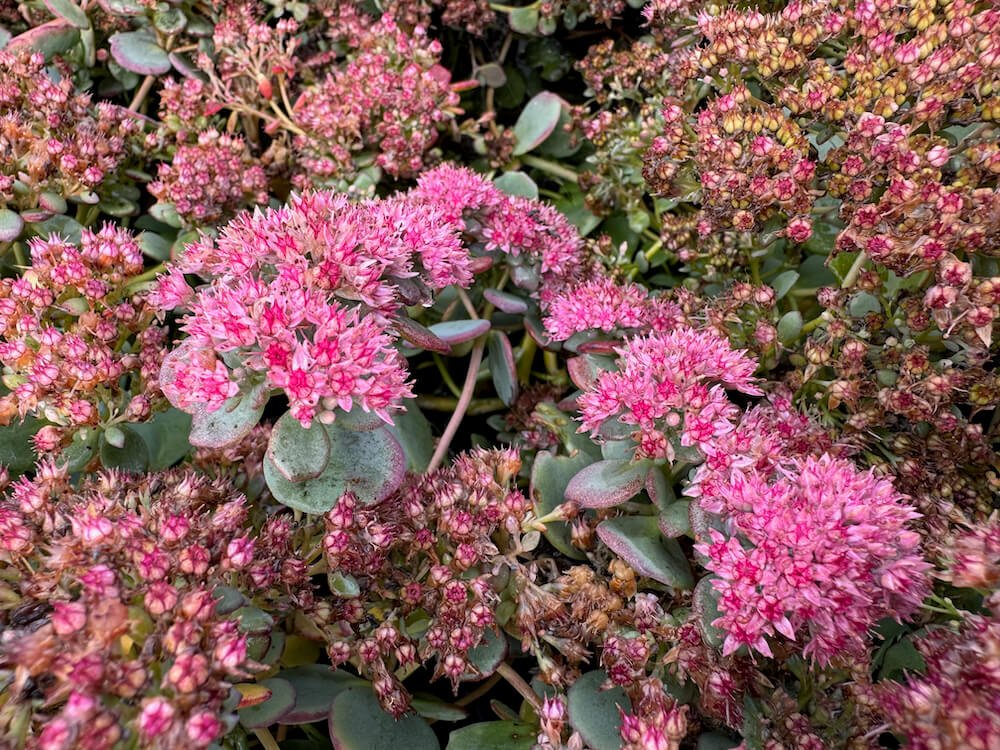DESCRIPTION
Sedum sieboldii, commonly known as October Daphne, is a low-growing perennial succulent celebrated for its blue-green, round, fleshy leaves arranged in neat whorls along arching stems. The edges of the leaves often take on a rosy-pink hue as the season progresses, adding to the plant's visual appeal. In late summer to early autumn, clusters of star-shaped, rosy-pink flowers appear at the tips of the stems, providing a delightful splash of color and attracting bees and butterflies to the garden.
Native to Japan, Sedum sieboldii thrives in rocky or well-drained areas, making it ideal for rock gardens, containers, or borders. Its trailing habit and vibrant colors make it a standout choice for cascading over walls or edging paths. This drought-tolerant’s colorful foliage and late-blooming flowers add charm to the landscape even as other plants begin to fade.
DESCRIPTION
Sedum sieboldii, commonly known as October Daphne, is a low-growing perennial succulent celebrated for its blue-green, round, fleshy leaves arranged in neat whorls along arching stems. The edges of the leaves often take on a rosy-pink hue as the season progresses, adding to the plant's visual appeal. In late summer to early autumn, clusters of star-shaped, rosy-pink flowers appear at the tips of the stems, providing a delightful splash of color and attracting bees and butterflies to the garden.
Native to Japan, Sedum sieboldii thrives in rocky or well-drained areas, making it ideal for rock gardens, containers, or borders. Its trailing habit and vibrant colors make it a standout choice for cascading over walls or edging paths. This drought-tolerant’s colorful foliage and late-blooming flowers add charm to the landscape even as other plants begin to fade.



